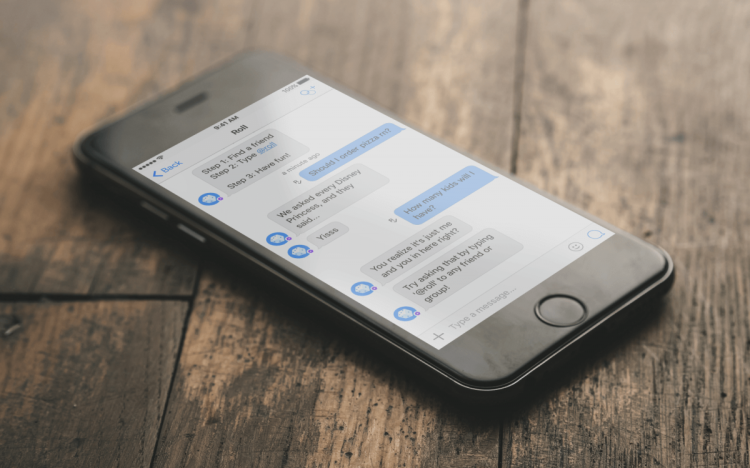With more and more people using chat to communicate in their work and everyday life, bots are becoming an important user interface that lets brands to connect with their users, as well as a great way to enable business workflows.
In 2016, this interface was mainly confined to basic user experience elements and somewhat cumbersome conversation, while 2017 is quickly becoming the year platforms enable bot designers to build richer interfaces. Bots in 2017 can be more effective, more engaging, and easier to use.
Why do richer interactions matter?
At the end of the day we want AI and conversational interfaces to expose services. Let’s admit it, users will not use bots just for the sake of it — they use bots only if they provide an easier or faster way to access a service and get things done. From the service provider and brand perspective, bots will only be adopted if they keep users more engaged and happier. It all comes down to providing great services and more productive workflows.
Not everything is simpler with a conversation — sometimes we just want to click a button, pick an option, or better yet, just have the information we need, when we need it, without asking. The exciting thing is that now bots are evolving to be able to do just that. As Phil Libin says, “Start by building a great product, and then think — what can you do now to expose it in a way you could not have done before, because the technology did not exist?”
June 5th: The AI Audit in NYC
Join us next week in NYC to engage with top executive leaders, delving into strategies for auditing AI models to ensure fairness, optimal performance, and ethical compliance across diverse organizations. Secure your attendance for this exclusive invite-only event.
Seeing this opportunity, we are starting to see more ways bots can engage with users in a delightful way.
1. More personalized voice services
Google Assistant can now understand the user context and distinguish between users. This is very exciting because developers that want to expose services will now be able to provide services customized to each user — “play my music” will mean a very different thing when I say it versus when my kids say it.
2. Update a user’s status to add context
People can now set custom statuses through an API in Slack that enables bots to set their user status for them.
For instance, Zenefits built their Slack bot to sync with an employee’s time-off requests, creating a custom status automatically when they’re on vacation. Upon their return, their status returns to whatever that person had set previously:

3. Make it easier to process user payments
This is an interesting move from the Kik platform: announcing they are going to tackle the challenge of bots facilitating payments natively in product (rather than sending the user to a web page as it is done today). Ted Livingston, the CEO of Kik, sees this as a critical part for the success of their bot ecosystem.
4. Let users listen to music with friends
Last week at F8, Facebook continued to evolve their Messenger platform, adding chat extensions that enable service providers to enhance our conversations with rich media. This is exciting because it opens new use cases, such as sharing and playing music straight from a conversation in an easier and more intuitive way.

5. Enable more nuanced decision-making with dropdowns
Helping a user take action is one of the most important objectives of most bots. Until now, bots enabled interactivity with buttons, but sometimes you need more. Sometimes, a user has to make a more nuanced decision than a button or link allows.
Message menus are the newest interactive feature for Slack apps: clickable dropdown menus that you can add to message attachments. They can have static options, or they can load dynamically.
In this example the user can set the stage for a sales lead. The Troops bot automatically updates the lead in Salesforce so your team can take the next steps needed to move the deal along.

It’s all about service
This year we’ll see advances in bot capabilities in many areas. Bots will improve in discovery, interactivity, ability to manipulate the user experience, and monetization. While all of these are great for bot builders and designers, it’s important to remember that it all starts and ends with customers having a great product or service that enables a delightful and productive experience.
Amir Shevat is head of developer relations at Slack.


